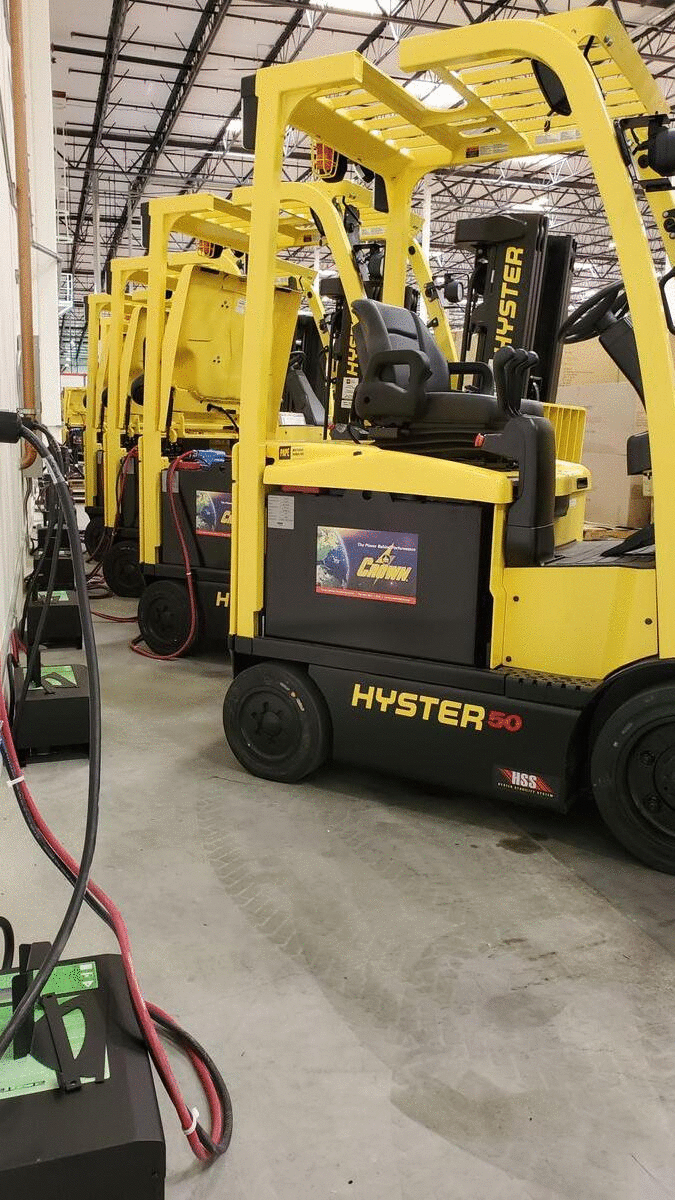
(New material handling equipment purchased by LP)
Material handling equipment is any tool used to aid in the movement, protection, storage, and control of materials and products. Without the proper equipment and systems in place, your company is more likely to damage products or fall behind in productivity. By knowing more about material handling equipment, you can better equip your warehouse or distribution center with the proper equipment and systems for your company’s needs.
The 4 Categories of Material Handling Equipment
1) Storage and Handling Equipment
This equipment category is self-explanatory. Storage and handling equipment is used to hold materials while they aren’t being used. The material commonly stored on this type of equipment is usually waiting to enter the production cycle or waiting to be transported. Here are some of the most common pieces of storage and handling equipment:
- Drawers, bins, and shelves: These are the most basic storage items commonly used to store smaller materials in an organized manner.
- Racks: Racks help companies store materials in accessible locations, and they save floor space.
- Stacking Frames: These are interlocking units that enable materials to get stacked without being crushed.
2) Bulk Handling Equipment
Bulk handling equipment refers to equipment that transports, stores, and controls bulk materials. This type of equipment is generally used to move and store materials in a loose form. Common examples of this type of equipment include:
- Stackers: Like forklifts, stackers help lift and stack heavy loads on the dock or in the warehouse.
- Reclaimers: These are large machines used to recover bulk materials from a stockpile.
- Bucket elevators: These elevators (also known as grain legs) assist with hauling bulk materials vertically.
- Silos: Silos are towers that hold materials. Materials that are typically stored in silos include grain, woodchips, coal, and sawdust.
3) Industrial Trucks
Industrial trucks are essential for warehouses and distribution centers. These powered trucks, such as forklifts, move large quantities of materials around the manufacturing floor. They are also utilized to load or unload heavy objects onto delivery trucks efficiently.
- Hand trucks: Hand trucks (also called dollies) are a simple piece of equipment designed to give operators the leverage they need to move heavy materials to new locations.
- Sideloaders: Sideloaders are built to fit in narrow aisles. They pick up items from different directions, making them ideal when a warehouse has aisles close together.
- Pallet trucks: Otherwise known as forklifts, pallet trucks are machines operators use to lift heavy pallets. The forks slip under the pallet, lift it, and secure it as the operator takes it to a new location.
4) Automated Systems
Automated or engineered systems refer to automated material handling equipment made to help transport and store materials. Rather than a single piece of equipment, an automated system is generally made out of several units. Here are some examples of automated systems:
- Conveyor systems: Automated conveyor systems carry heavy materials to specified destinations using belts, flexible chains, or live rollers. It is highly efficient equipment to move large volumes of material quickly.
- Automated guided vehicles: These vehicles are mobile robots that follow specific markers or wires in the floor to move large materials around a manufacturing facility or warehouse. Vision, magnets, or lasers can be used as methods for AGV navigation.
- Robotic delivery systems: Robotic delivery systems transport goods and materials around a facility. These systems usually help move goods along an assembly line.
New Material Handling Equipment Incorporated by Logistics Plus
The Logistics Plus warehouse teams are in the process of upgrading our warehouse handling equipment (as shown in the slideshow above). For example, our Chino, CA warehouse has purchased several electric forklifts as part of our environmental and sustainability initiatives. We also purchased uniquely efficient Combilifts to meet the needs of our growing solar business. These specialized lifts help us get heavy solar products on high racks within a limited space. Our Chicago, IL warehouse purchased new Aisle Master units specially designed to work in narrow aisle rack configurations.
With the help of proper material handling equipment, you can ensure your products are stored safely and appropriately. If you’re searching for a warehousing and distribution partner you can trust, contact Logistics Plus today. We have the equipment and resources needed to take your business to the next level.

